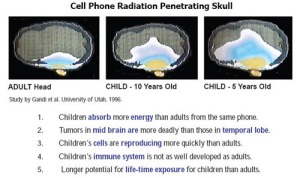In the dissection of the word rebirth comes the prefix re- which means anew or afresh, while birth means the beginning or coming into existence of something, As many monikers have been given to the resumption of the midst of Covid-19 regulations and the slow burn of the worldwide pandemic, re-birthing is the closest single-word descriptor that would run the gamut of the experience right now.
The expectation that government regulations alone or science alone, not together as a unit, would cut down the life span of the virus as we have known it to be is a fault of object permanent thinking. It is after all safer to default to what is comfortable, the known black or white options than the combination of fidelity thinking. Fear or courage, anger or happiness, peace or war. We could be discussing literature themes with these high octane emotions however it does not stretch the imagination to see when one leaves the physical or digital cocoon that the either-or linear thinking is the driver of humans when faced with a problem not easily handled with prior learning or solutions.
We had discussed in previous articles how pro-social behaviors and the need for human interaction are the basis of societal stability, including the economic and academic worlds that have been in such heated contentious situations of late. Whoever said that idle hands are the devil’s playground did not take into account a forced stop, wherever one was, for longer than a few weeks. So it would make sense as people are (figuratively) dragged out of their homes and homely conditions back to what was once was normed, there will be re-birthing: kicking, screaming, and long-term adjustment.
But as mentioned, we have many brain states and developmental ages to think about in 2.0. We have the younger people who marked their schooling milestones in front of a computer screen instead of on a playing ground or person-to-person peer and teacher routine. And then there are the adults who have been lucky enough to love their jobs cause they loved them back, swing right back into it without missing a beat. And then we have those in-between who are school-aged to vocationally transitioning adults who had more than enough time in their hands to do versions of homework and self-work.
In the 2.0, there needs to be consideration of the shifts in skill sets and motivation for those skills. A curious question to ask is how did I tend to my critical thinking and literacy growth when forcibly paused? Did I overindulge in the reality to the point of paralysis? Or was I intentional in being an autodidact and directed a diet of reality, fantasy, and mindfulness worlds? How purposeful was I in conserving my energies when surrounded by the same people for those many weeks, a month?
The re-birthing of young minds into the rigor of classrooms reveals the sample size of how many adults are functioning. They first enter incautious, paralleled worlds, and the younger they are, especially if going back to school in a new environment, require a lot of effort in retooling their socializing selves. Add socializing with a mask, when you can read only the top half of a peer or school staff member’s face adds a layer of complexity — which of the emotions am I reading correctly if at all?
The whole idea that thinking critically was siloed for education or for that period where one was required to analyze text is so pre-pandemic. Without complete access to someone’s affect, body language is half calculated, or for those who have to be around a lot of people every day now, exaggerated so as not to be miscalculated. In a text from a section called Critical Literacy from a site that supports children’s literacy in the 20th century in Saskatchewan, CN, defines Literacy as a process that involves a continuum of interrelated skills, practices, and learnings that contribute to the development of an individual’s ability to understand, communicate, and participate in a variety of roles ( i.e., parent, citizen, and worker) and settings, in the home, at work, in education, and in the community.
In essence, Literacy includes Listening and speaking; reading and writing; observing, viewing and representing; numeracy; use of technology such as computers and other smart devices. Literacy is essential to and can influence the ability to think critically, make decisions, solve problems, and resolve conflicts. To further expand on critical literacy, the Brazilian educator and educator Paolo Freire in 1970 posits that, “Critical literacy views readers as active participants in the reading process and invites them to move beyond passively accepting the text’s message to question, examine, or dispute the power relations that exist between readers and authors. It focuses on issues of power and promotes reflection, transformation, and action.”
Now for the context of this article, reading is not limited to a written, visual exposition of the text. Reading here is the brain’s neuronal processing of an experience when stimuli are presented to it, either internally or externally propelled. The interpretation of what is read connects to the previous memories and experiences of the person ‘reading’ thus, the ‘text’ can be anything that causes thought to make inferences.
Ironically people read their living and nonliving environments all the time, actively or passively. The physical world interacts with the physical self first before the brain and the mind creates internal classifications of the experience – not at all similar to the binary experience of the emotions mentioned earlier. Neuronal pathways are constantly reassessing what was known to be committed as knowledge prior and reconfigured when necessary.
We are always critically receiving and giving literacy text without full awareness most of the time. To carve metacognition intended text production is key; questions need to be asked before statements, theories about other human experiences need to be tested before conclusions are drawn. Salisbury University’s Counseling Center adopts these 7 Critical Reading Strategies that are also significant for human contextual reading:
- PREVIEWING– learning about a text before reading it. Reviewing what the sensory systems are telling you as the reader of a person without adding judgment.
- CONTEXTUALIZING-placing a text in historical, biographical, cultural
contexts, from the personal, local and to the global environments. - QUESTIONING TO UNDERSTAND/REMEMBER– asking questions about
the content based upon the preview and the contexts to provide pre-hypothesis of the person whose experience is being read. - REFLECTING ON CHALLENGES TO BELIEFS/ VALUES-examining
personal responses and one’s previous emotional lives attached or detached from the person whose experience is being read. - OUTLINING and SUMMARIZING– identifying main ideas and restating in
your own words after making concrete connections to the text of the person being read and theories proven or disproven. - EVALUATING AN ARGUMENT– testing logic of a text when there is volatility in the reading of the person’s experience that supports polarity within the self instead of clarity.
- COMPARING and CONTRASTING RELATED READING – exploring likenesses and differences, reaching for empathy and pro-social intentions when making connections.
Thus in the period of 2.0, read with care. At this rate, we are all emergent readers from a collectively conscious experience that only centenarians could navigate for and with us. Reading with purpose, reading with intensity, and becoming critically literate will see us and our brains on a steady course.












 if the student guesses on every single question. Dr. Robert Bjork found that after a simple experiment with his introductory psychology class that students performed 10% better on questions related to pre-test questions when taking the final exam than on questions with no similar equivalent on the pre-test. Students have the possibility of improving test scores by an entire grade with the addition of a pre-test. Furthermore, testing as a study strategy decreases the illusion of fluency, which tends to occur when students read notes or the text book multiple times as a way to study. Dr. Henry Roediger theorizes that it forces the brain to do something more challenging that visually or auditorally process information; this additional effort increases the strength at which it is stored and later the ability at which is can be retrieved. Essentially, testing acts as a novel opportunity to learn and store the information; therefore, it becomes stored in a new way in the brain, connecting to other related facts thus strengthen storage and recall.
if the student guesses on every single question. Dr. Robert Bjork found that after a simple experiment with his introductory psychology class that students performed 10% better on questions related to pre-test questions when taking the final exam than on questions with no similar equivalent on the pre-test. Students have the possibility of improving test scores by an entire grade with the addition of a pre-test. Furthermore, testing as a study strategy decreases the illusion of fluency, which tends to occur when students read notes or the text book multiple times as a way to study. Dr. Henry Roediger theorizes that it forces the brain to do something more challenging that visually or auditorally process information; this additional effort increases the strength at which it is stored and later the ability at which is can be retrieved. Essentially, testing acts as a novel opportunity to learn and store the information; therefore, it becomes stored in a new way in the brain, connecting to other related facts thus strengthen storage and recall.